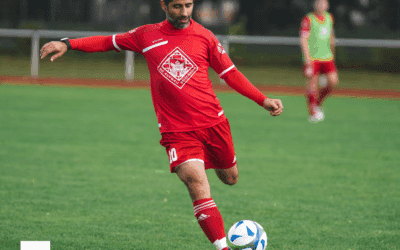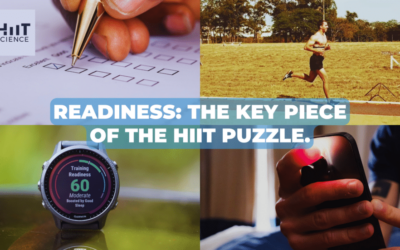Recently a narrative has emerged surrounding sports science as being over-protective.
Stories from high-profile former players tell of sports scientists reining them in, and risking the robustness of future generations: “
All of a sudden you start drilling someone in training, and a sports science bloke pops over: ‘Woah, woah, woah, he’s in the red.” Now I don’t agree that these sentiments are entirely true. Sports science has undoubtedly added much to the football landscape, with physicality increasing in the English Premier League (3), and the great
Sir Alex Ferguson calling the advent of sports science “The biggest and most important change in my lifetime
(Irish Times 9/3/2013)“. Reflecting this change in understanding around sports science, club academies are now obliged to hire sports science staff if they are to be given the highest rating by the English Premier League. Within these statements from former top players, there is certainly an element of: “It wasn’t like that in my day”. However,
Tony Strudwick, the man who oversaw much of the sports science revolution under Sir Alex fears that sports science has
lost its way and is focussing more on preventing injury than pursuing performance.
Our intentions are entirely honourable. We want to keep the players fit and on the pitch for the team. However, it seems we may have taken a reductionist approach to this, discounting the complexity of human performance and coaching, often for a precise set of thresholds and ratios. These numbers are sometimes derived in a student population, often in a different sport entirely, and hardly ever within our own teams. The reasons for this are varied and too big for this blog post. But as members of the performance support staff, we must be assuring those around us, as well as supporting the players in our roles, are looking to lift them up and instill both confidence and the physical robustness needed to see them through what is essentially a 12-month playing calendar at the top level.
In the past year, my wife and I became parents for the first time; a daunting adventure, initially through the delivery and now in raising our daughter. I have undoubtedly become more reflective and one of the things that struck me several weeks on from the birth was how sports scientist are analogous to midwives.

Midwives deliver babies into the world 24 hours a day, 365 days per year and for first time parents who have no idea what is about to happen, they are the calm amongst a storm of emotion and effort, often meeting you for the first time as you walk through the hospital doors. They say that every birth is different, and midwives use a combination of experience, reading of the individual through body language, getting to know them through conversation, and occasionally using instruments such as heart rate monitors to tell the mother when to push, when to relax and steer you through the birth.
It was this last bit that stayed with me the most; there are times when it is safe in labour for the mother to push and times to relax and recover for the next effort. As sports scientists, we want our players to push very hard at the right moments. So we may overload them in a progressive manner and elicit the physiological adaptation we are aiming for. At other times, we may want them to relax to recover to make sure they are ready to go again.
Within the complexity of football, we need to overload different energy systems and actions across varied durations and levels of intensity at different times in the week leading into the game. All of this needs to take place alongside the (arguably more important) tactical and technical training and allow for the players to recover from one match and arrive at the following match day fresh to perform.
To do this we should be using the same tools as the midwife. We should utilize conversation to get to know our players and be able to judge their body language, so we may get an idea of how they feel as soon as they walk through the door. We should be leveraging our experience to know when and how much we are willing to push a player throughout the training week, and objective instrumentation should be used to keep tabs on our progress.
Within the week we may have more than one match, leaving us facing an issue where we have to prepare one set of players for the next match and recover those that have just played. Often there are just two days between matches and our time is extremely limited, particularly if you are in Europe for a midweek fixture and don’t get back until the early hours of the next day.
This mix of different situations and time constraints lends itself to the HIIT toolbox (1, 2). With HIIT, you can manipulate many of the variables to modulate different components. If you want to emphasise aerobic over anaerobic development it’s easily done. If you want to provide a stimulus without undue fatigue, that’s no problem either. If your aim is to achieve more central versus peripheral adaptations, there are guidelines in place for that. HIIT is a great add-on to our technical and tactical training that doesn’t take up a lot of time. This last point is critical for the coach and player, enabling real improvements in various fitness aspects in a time efficient manner. In short, HIIT enables us to be the midwives, advising our players when and how hard to push, as well as ensuring they are recovered and ready to perform when it matters most.
About the author
Jack Nayler is currently Head of Sports Science at Celtic Football Club, where he oversees sports science support from the first team, down through the academy. Previously he has worked at Real Madrid, Paris St Germain and Chelsea. He is passionate about individual and team performance and has interests in how best to achieve this in an applied setting. You can follow him on twitter @JackWNayler.
References
- Buchheit M and Laursen PB. High-intensity interval training, solutions to the programming puzzle: Part I: cardiopulmonary emphasis. Sports Med 43: 313-338, 2013.
- Buchheit M and Laursen PB. High-intensity interval training, solutions to the programming puzzle. Part II: anaerobic energy, neuromuscular load and practical applications. Sports Med 43: 927-954, 2013.
- Bush M, Barnes C, Archer DT, Hogg B, and Bradley PS. Evolution of match performance parameters for various playing positions in the English Premier League. Human movement science 39: 1-11, 2015.
 Midwives deliver babies into the world 24 hours a day, 365 days per year and for first time parents who have no idea what is about to happen, they are the calm amongst a storm of emotion and effort, often meeting you for the first time as you walk through the hospital doors. They say that every birth is different, and midwives use a combination of experience, reading of the individual through body language, getting to know them through conversation, and occasionally using instruments such as heart rate monitors to tell the mother when to push, when to relax and steer you through the birth.
It was this last bit that stayed with me the most; there are times when it is safe in labour for the mother to push and times to relax and recover for the next effort. As sports scientists, we want our players to push very hard at the right moments. So we may overload them in a progressive manner and elicit the physiological adaptation we are aiming for. At other times, we may want them to relax to recover to make sure they are ready to go again.
Within the complexity of football, we need to overload different energy systems and actions across varied durations and levels of intensity at different times in the week leading into the game. All of this needs to take place alongside the (arguably more important) tactical and technical training and allow for the players to recover from one match and arrive at the following match day fresh to perform.
To do this we should be using the same tools as the midwife. We should utilize conversation to get to know our players and be able to judge their body language, so we may get an idea of how they feel as soon as they walk through the door. We should be leveraging our experience to know when and how much we are willing to push a player throughout the training week, and objective instrumentation should be used to keep tabs on our progress.
Within the week we may have more than one match, leaving us facing an issue where we have to prepare one set of players for the next match and recover those that have just played. Often there are just two days between matches and our time is extremely limited, particularly if you are in Europe for a midweek fixture and don’t get back until the early hours of the next day.
This mix of different situations and time constraints lends itself to the HIIT toolbox (1, 2). With HIIT, you can manipulate many of the variables to modulate different components. If you want to emphasise aerobic over anaerobic development it’s easily done. If you want to provide a stimulus without undue fatigue, that’s no problem either. If your aim is to achieve more central versus peripheral adaptations, there are guidelines in place for that. HIIT is a great add-on to our technical and tactical training that doesn’t take up a lot of time. This last point is critical for the coach and player, enabling real improvements in various fitness aspects in a time efficient manner. In short, HIIT enables us to be the midwives, advising our players when and how hard to push, as well as ensuring they are recovered and ready to perform when it matters most.
About the author
Jack Nayler is currently Head of Sports Science at Celtic Football Club, where he oversees sports science support from the first team, down through the academy. Previously he has worked at Real Madrid, Paris St Germain and Chelsea. He is passionate about individual and team performance and has interests in how best to achieve this in an applied setting. You can follow him on twitter @JackWNayler.
References
Midwives deliver babies into the world 24 hours a day, 365 days per year and for first time parents who have no idea what is about to happen, they are the calm amongst a storm of emotion and effort, often meeting you for the first time as you walk through the hospital doors. They say that every birth is different, and midwives use a combination of experience, reading of the individual through body language, getting to know them through conversation, and occasionally using instruments such as heart rate monitors to tell the mother when to push, when to relax and steer you through the birth.
It was this last bit that stayed with me the most; there are times when it is safe in labour for the mother to push and times to relax and recover for the next effort. As sports scientists, we want our players to push very hard at the right moments. So we may overload them in a progressive manner and elicit the physiological adaptation we are aiming for. At other times, we may want them to relax to recover to make sure they are ready to go again.
Within the complexity of football, we need to overload different energy systems and actions across varied durations and levels of intensity at different times in the week leading into the game. All of this needs to take place alongside the (arguably more important) tactical and technical training and allow for the players to recover from one match and arrive at the following match day fresh to perform.
To do this we should be using the same tools as the midwife. We should utilize conversation to get to know our players and be able to judge their body language, so we may get an idea of how they feel as soon as they walk through the door. We should be leveraging our experience to know when and how much we are willing to push a player throughout the training week, and objective instrumentation should be used to keep tabs on our progress.
Within the week we may have more than one match, leaving us facing an issue where we have to prepare one set of players for the next match and recover those that have just played. Often there are just two days between matches and our time is extremely limited, particularly if you are in Europe for a midweek fixture and don’t get back until the early hours of the next day.
This mix of different situations and time constraints lends itself to the HIIT toolbox (1, 2). With HIIT, you can manipulate many of the variables to modulate different components. If you want to emphasise aerobic over anaerobic development it’s easily done. If you want to provide a stimulus without undue fatigue, that’s no problem either. If your aim is to achieve more central versus peripheral adaptations, there are guidelines in place for that. HIIT is a great add-on to our technical and tactical training that doesn’t take up a lot of time. This last point is critical for the coach and player, enabling real improvements in various fitness aspects in a time efficient manner. In short, HIIT enables us to be the midwives, advising our players when and how hard to push, as well as ensuring they are recovered and ready to perform when it matters most.
About the author
Jack Nayler is currently Head of Sports Science at Celtic Football Club, where he oversees sports science support from the first team, down through the academy. Previously he has worked at Real Madrid, Paris St Germain and Chelsea. He is passionate about individual and team performance and has interests in how best to achieve this in an applied setting. You can follow him on twitter @JackWNayler.
References






